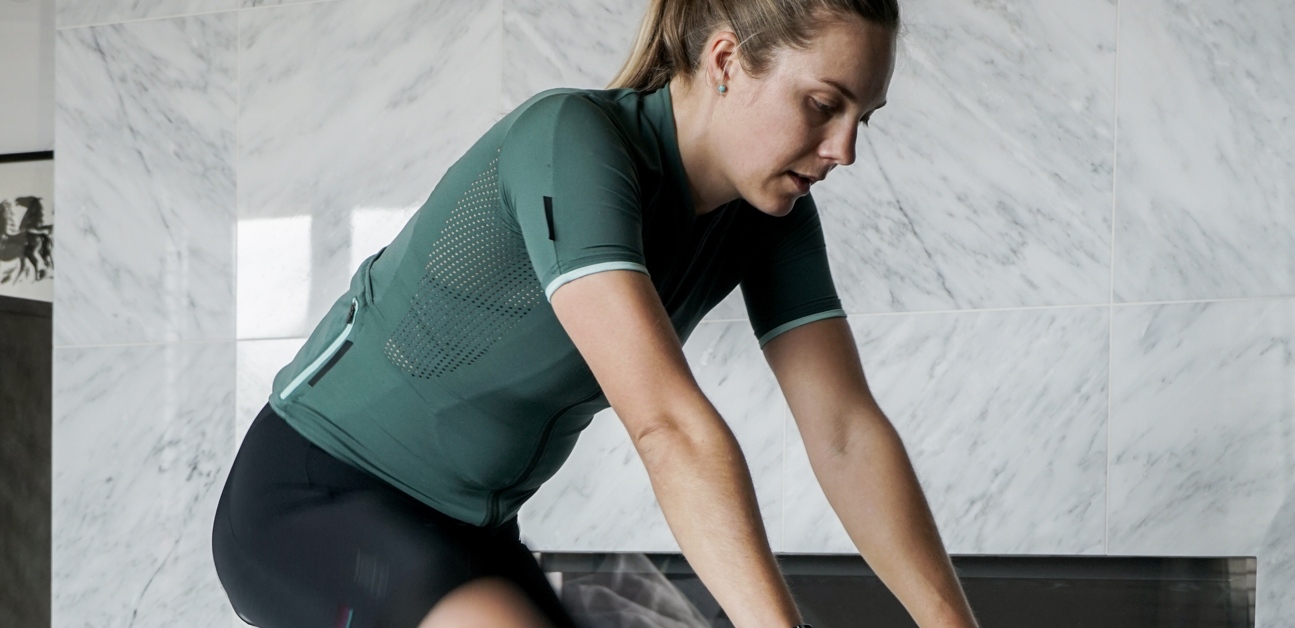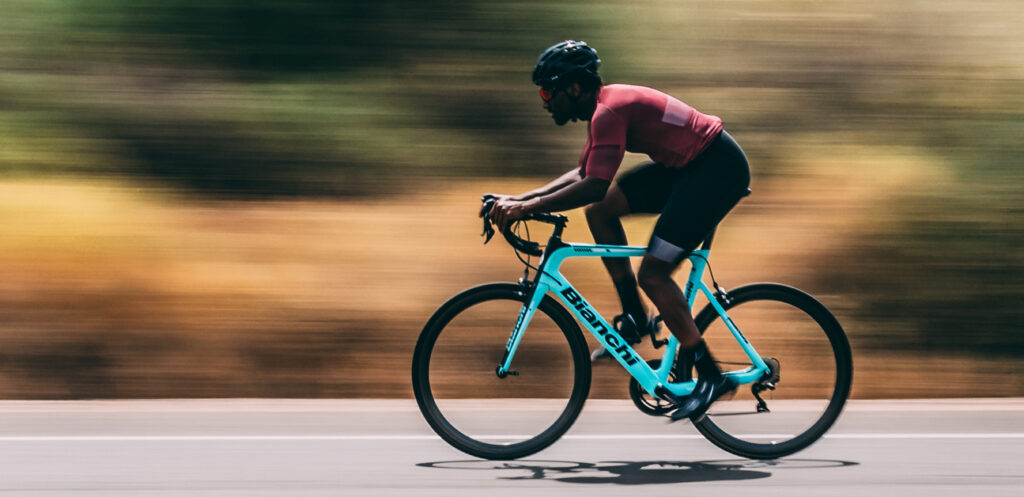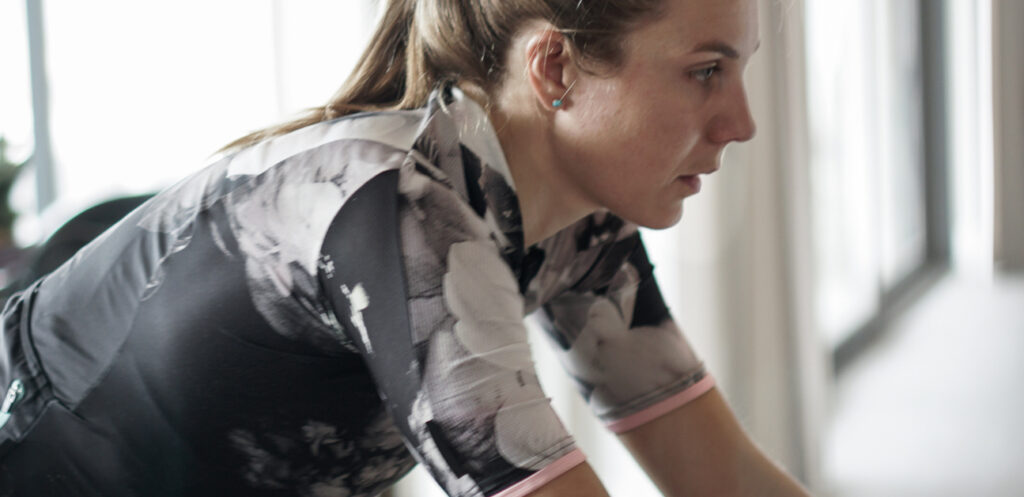How to Manage Postexercise Hypotension

You’ve finished a ride and are resting with your feet up. Then you stand up and suddenly feel lightheaded. What gives? You’ve just experienced the effects of postexercise hypotension. But what is postexercise hypotension, the causes, and how can you manage it?
For more information on why cycling training can make you lightheaded check out Ask a Cycling Coach Ep 267.
Recently, I finished a long, sweet spot training ride in the sweltering heat. About an hour later, I was lying on the couch when my leg cramped up. I immediately jumped up to stretch it out, walked to the restroom, and the next thing I remembered was my wife standing over me. I had fainted due to low blood pressure. Fortunately, I avoided serious injury. The adverse effects of postexercise hypotension can happen suddenly, but the good news is that there are things that you can do to help.
What is Postexercise Hypotension?
Postexercise hypotension is a reduction of blood pressure, below their normal levels following aerobic exercise. Typically, this lower blood pressure is a response to the use of large muscle groups in the lower body. Cycling, running, and swimming can all cause postexercise hypotension, and it can last for several hours.
Adaptive Training
Get the right workout, every time with training that adapts to you.
Check Out TrainerRoadLower blood pressure after your ride is entirely normal; however, it can lead to lightheadedness for fit athletes. Additionally, orthostatic or postural hypotension can exacerbate the feeling of lightheadedness. Acute bouts of hypotension can lead to fainting.
What Causes Postexercise Hypotension?
You’ve been training and getting fitter, so why are you experiencing dizziness after a ride? The simple answer is that all the aerobic adaptations you’ve worked hard to gain are the cause. As you train, you increase the number of blood vessels, increase the heart’s stroke volume, and improve your vagal tone. All of these contribute to an overall reduction in blood pressure off the bike.
During a ride, your body prioritizes blood flow to the lower body in two ways. The first is by constricting blood flow to the non-working muscles in the upper body. Additionally, vasodilation in the working muscles helps to maximize blood flow in the lower body. This sympathetic activation causes a temporary increase in cardiac output and blood pressure.
In contrast, after your ride, the parasympathetic system kicks in to shift your body to a rest and digest state. As you are recovering, the vasodilation in the legs continues, while your heart rate decreases. Because of your elevated core temperature, the body works to shed heat by sending more blood to the periphery. And finally, your blood plasma volume is lower due to sweating. All of this results in lower blood pressure.
Why do You Get lightheaded?
Dizziness or lightheadedness is caused by decreased blood flow to the brain. Since the brain needs a steady supply of oxygen, our bodies have a fantastic mechanism to help. The body uses the baroreflex to regulate blood pressure throughout the body. It ensures that the brain has adequate blood flow by increasing heart rate and vasoconstriction.
Another way to think about it is that two different responses are battling each other. Your parasympathetic response and training adaptions are fighting against your baroreflex. When you get lightheaded, it’s because the baroreflex lost.
What Can You Do?
Postexercise hypotension can last for several hours, but the good news is that there are some things that you can do to help. From nutrition to being aware of your surroundings, safety is a primary concern. It’s a good idea to check with your doctor if you are continually experiencing dizziness or lightheadedness.
The first solution is staying hydrated with adequate electrolytes. This will help fight off a drop in blood plasma volume. Emerging research suggests that salt loading can help. Another thing is to be aware of your surrounding, and when you get up from lying or sitting position, take your time. It can also help to use the Valsalva maneuver. To use it, pinch your nose, close your mouth and try to exhale.
For more information on blood plasma volume, check out Blood Plasma Volume and Your Performance.
For more cycling training knowledge, listen to Ask a Cycling Coach — the only podcast dedicated to making you a faster cyclist. New episodes are released weekly.
References and Further Reading
- Babcock, Matthew & Robinson, Austin & Watso, Joseph & Migdal, Kamila & Martens, Christopher & Edwards, David & Pescatello, Linda & Farquhar, William. (2019). Salt Loading Blunts Central and Peripheral Postexercise Hypotension. Medicine & Science in Sports & Exercise. 52. 1. 10.1249/MSS.0000000000002187.
- Chen, C. Y., & Bonham, A. C. (2010). Postexercise hypotension: central mechanisms. Exercise and sport sciences reviews, 38(3), 122–127. https://doi.org/10.1097/JES.0b013e3181e372b5
- Halliwill JR, Buck TM, Lacewell AN, Romero SA. Postexercise hypotension and sustained postexercise vasodilatation: what happens after we exercise?. Exp Physiol. 2013;98(1):7-18. doi:10.1113/expphysiol.2011.058065
- Kenney MJ, Seals DR. Postexercise hypotension. Key features, mechanisms, and clinical significance. Hypertension. 1993;22(5):653-664. doi:10.1161/01.hyp.22.5.653
- Pricher MP, Holowatz LA, Williams JT, Lockwood JM, Halliwill JR. Regional hemodynamics during postexercise hypotension. I. Splanchnic and renal circulations. J Appl Physiol (1985). 2004;97(6):2065-2070. doi:10.1152/japplphysiol.00465.2004

